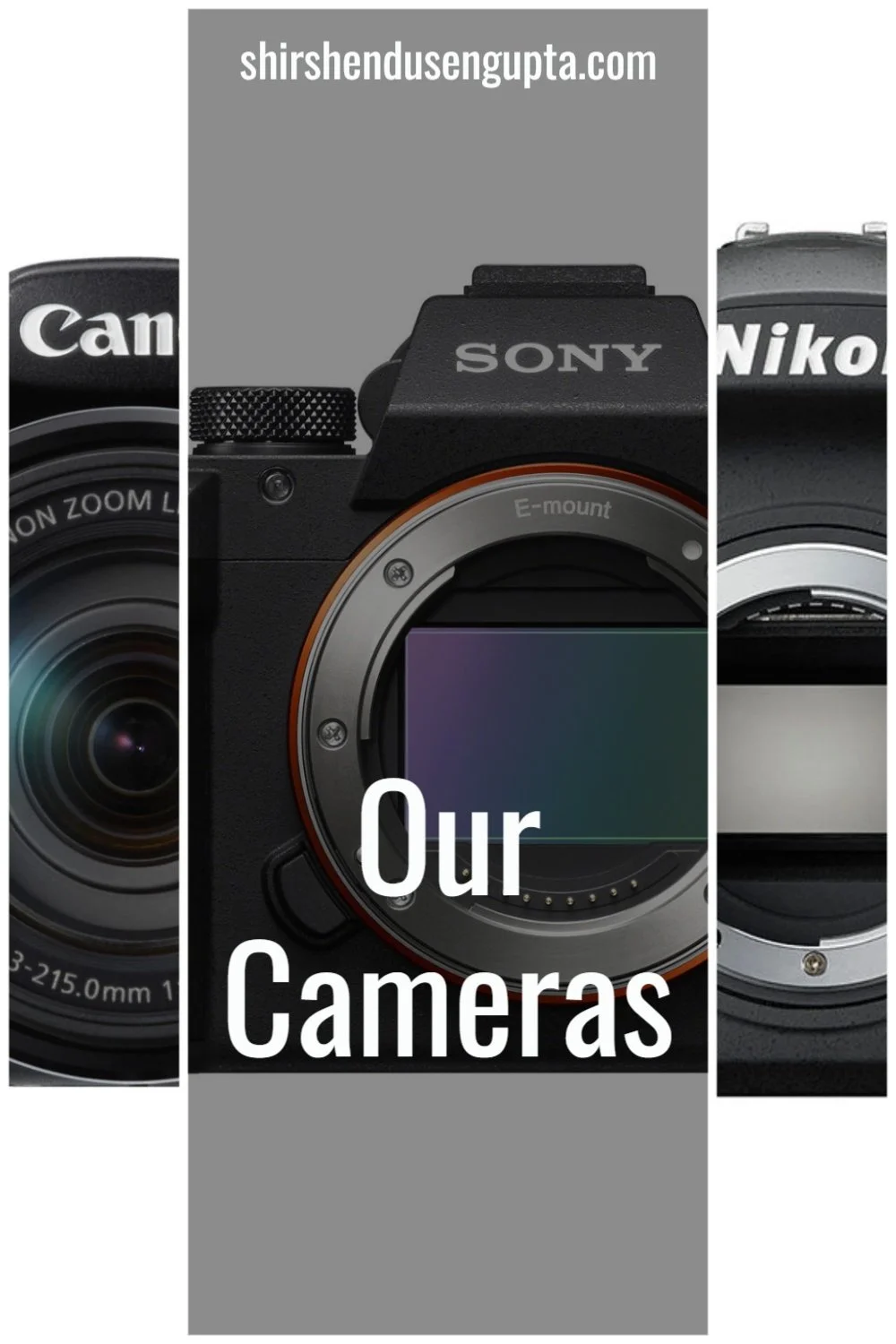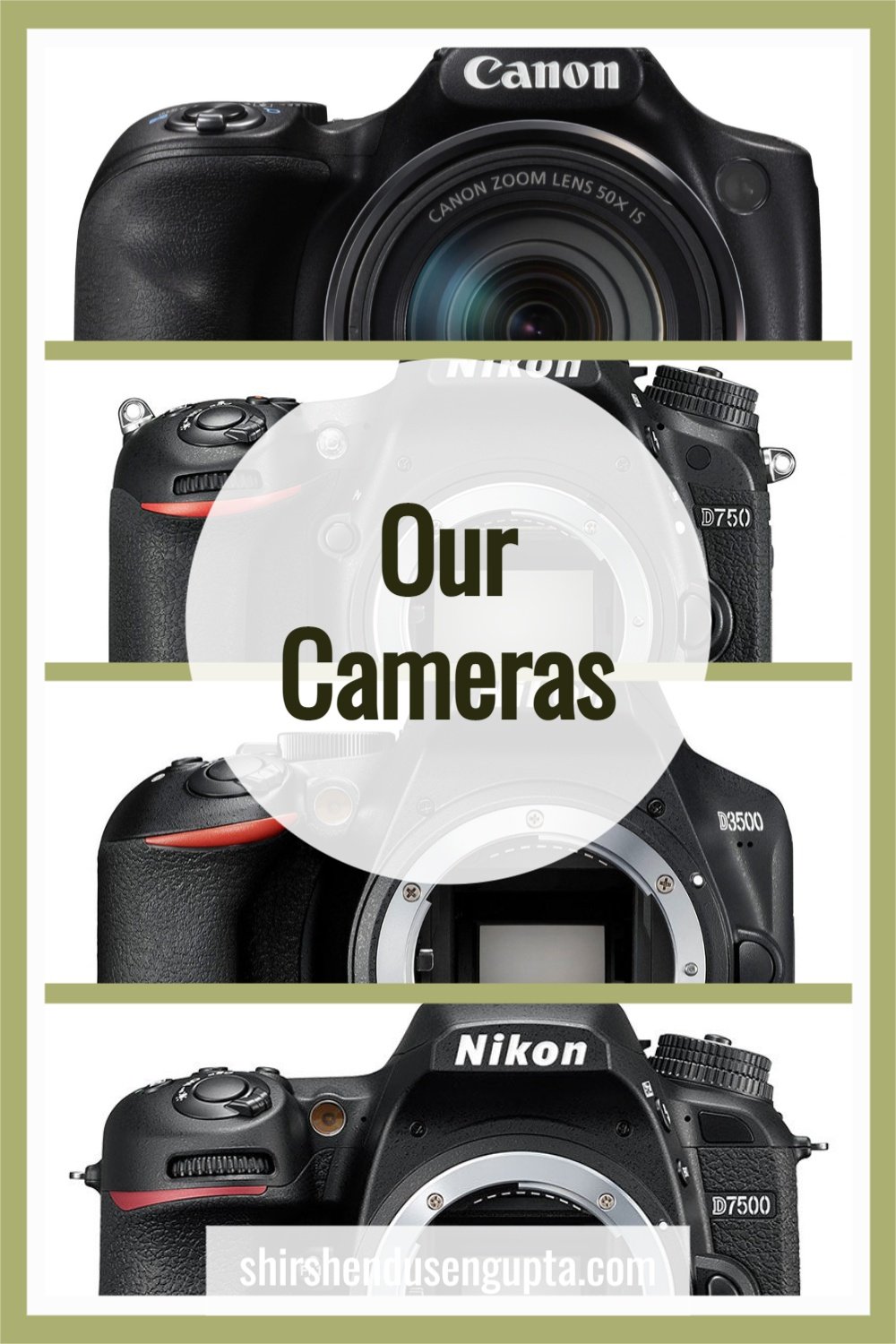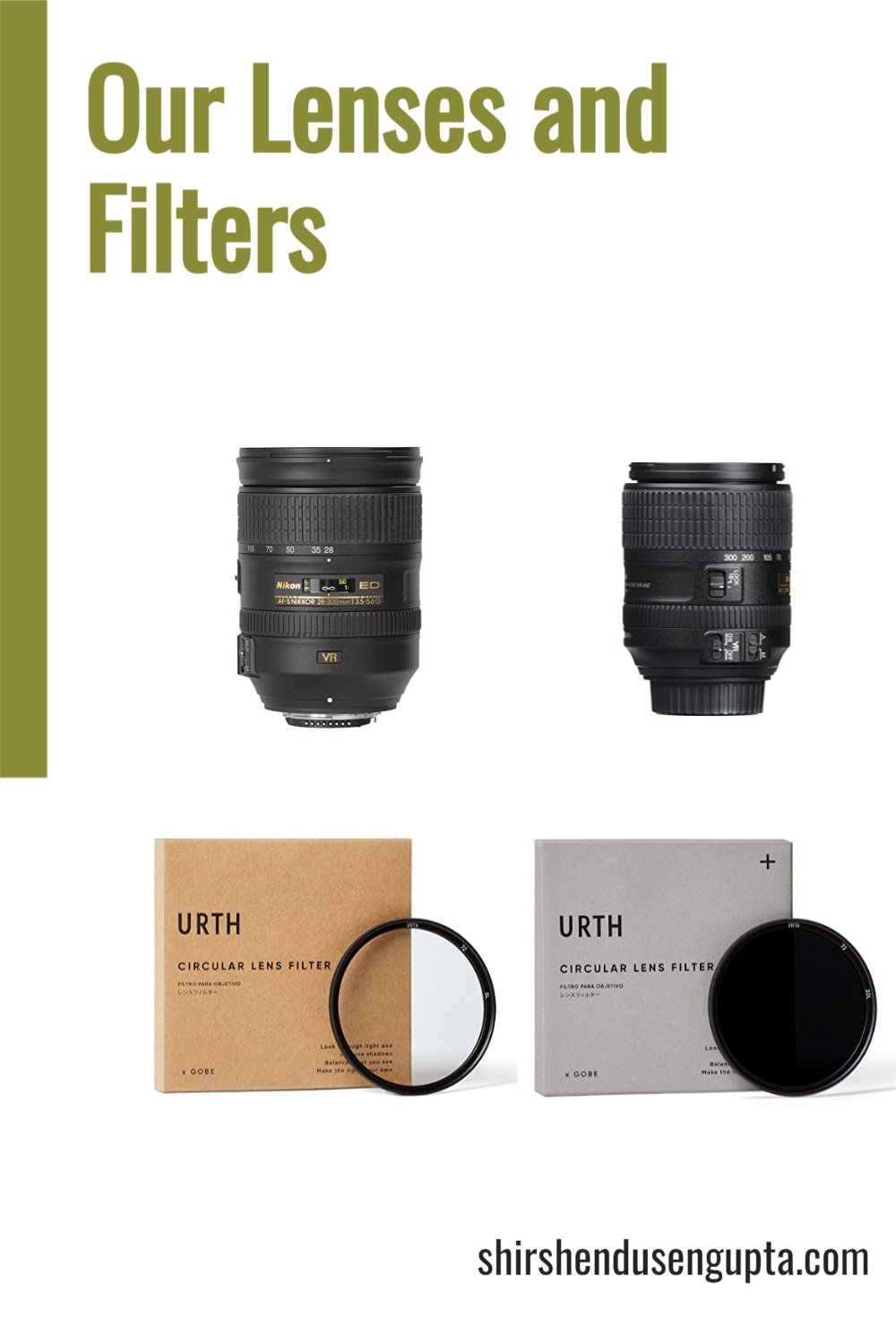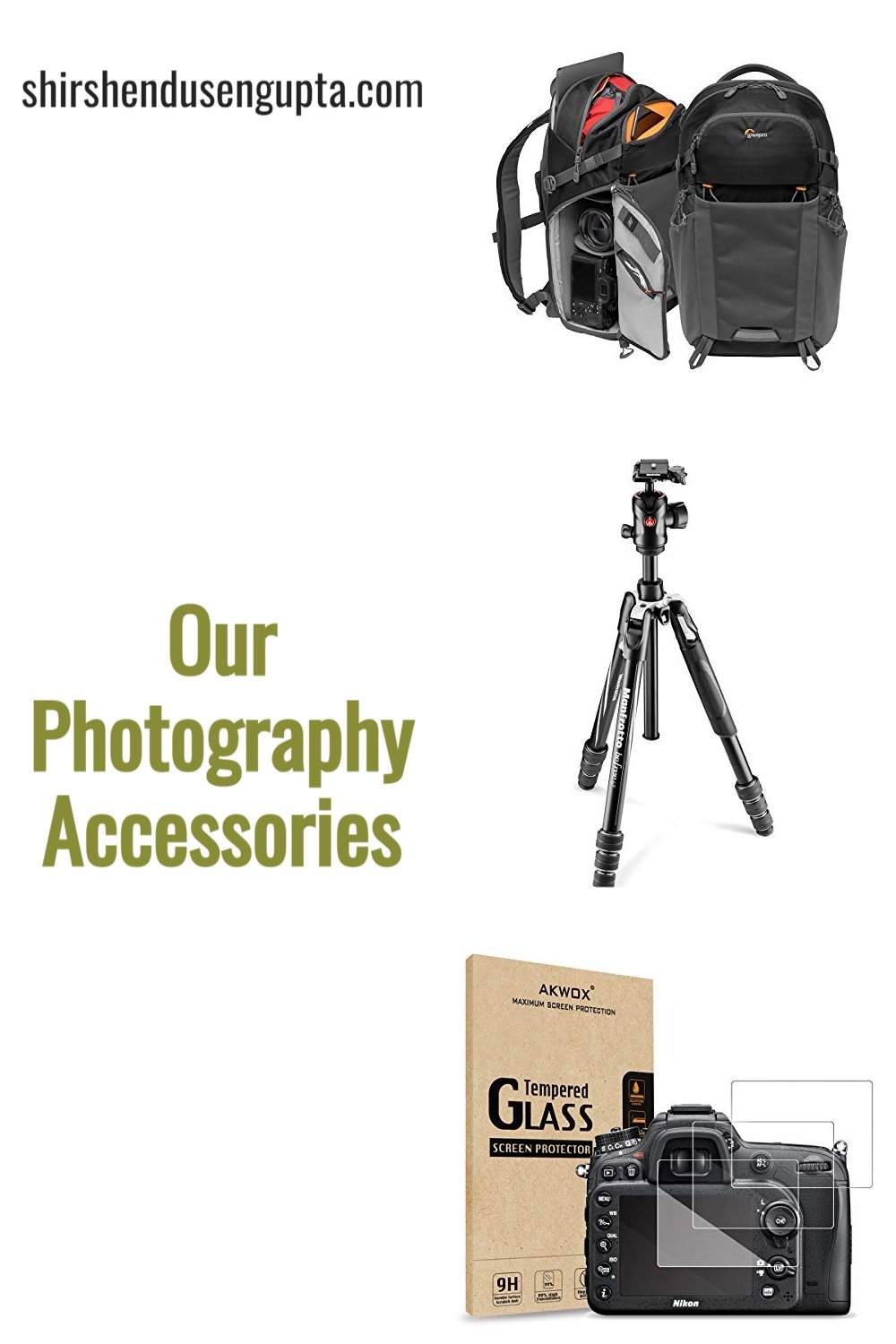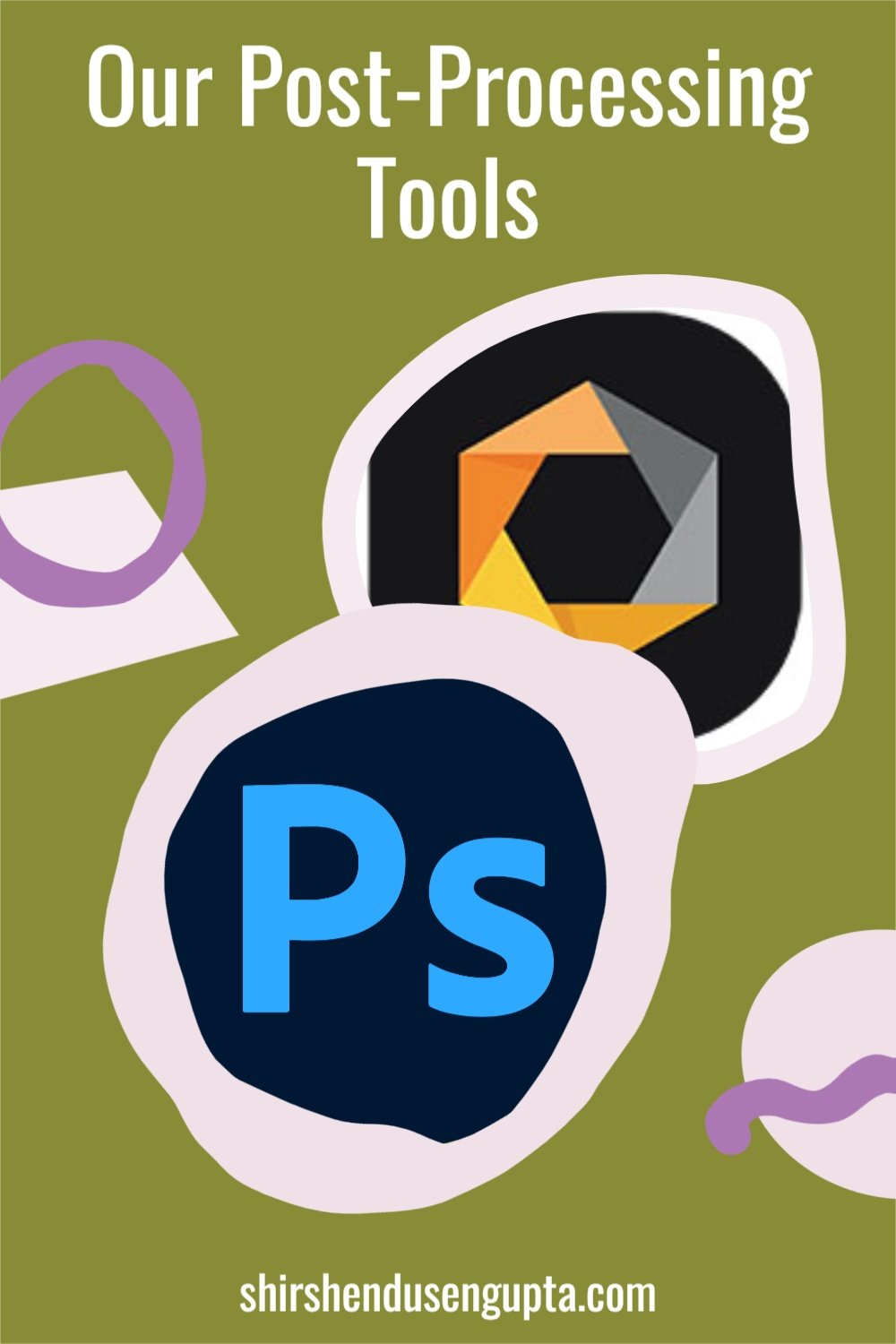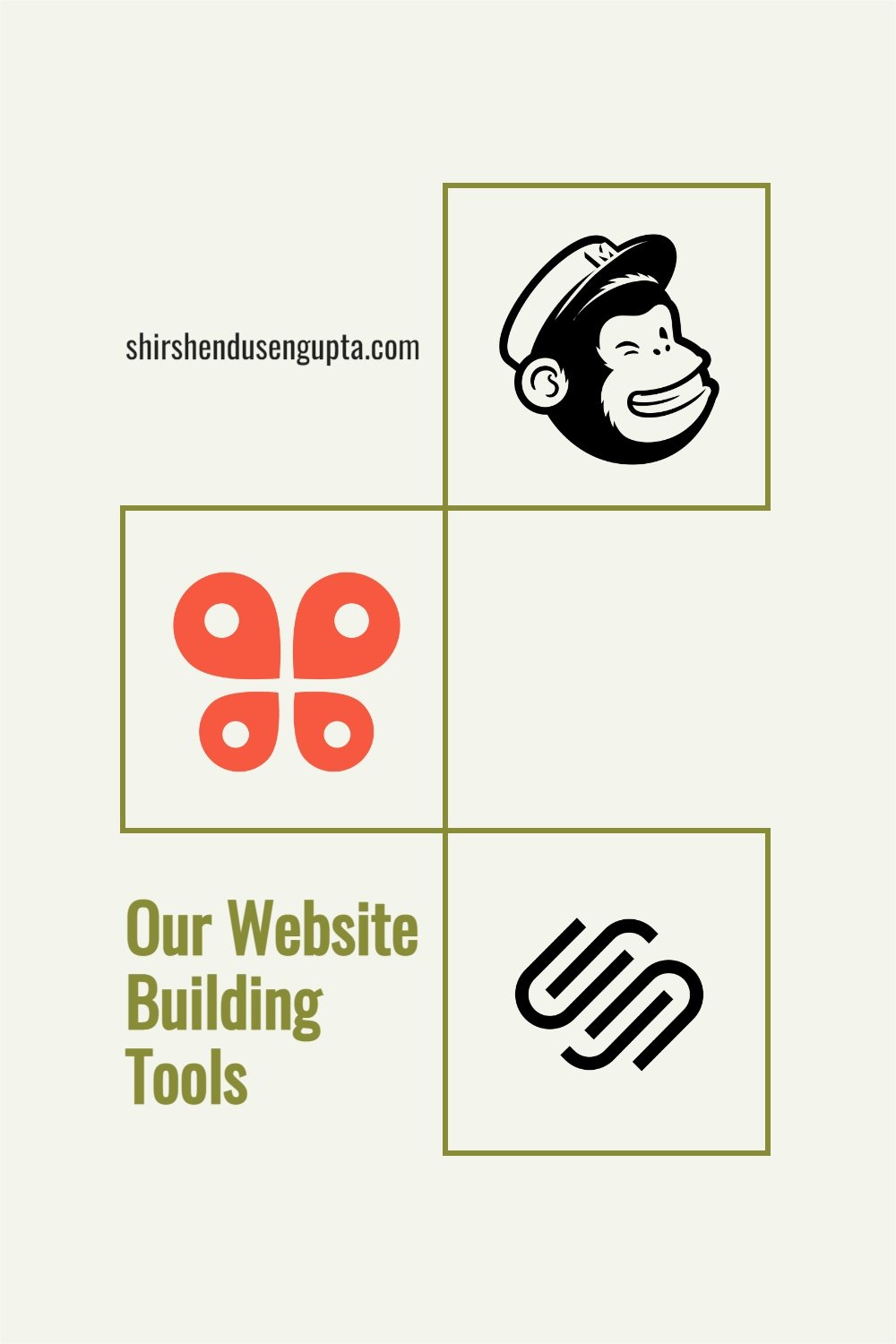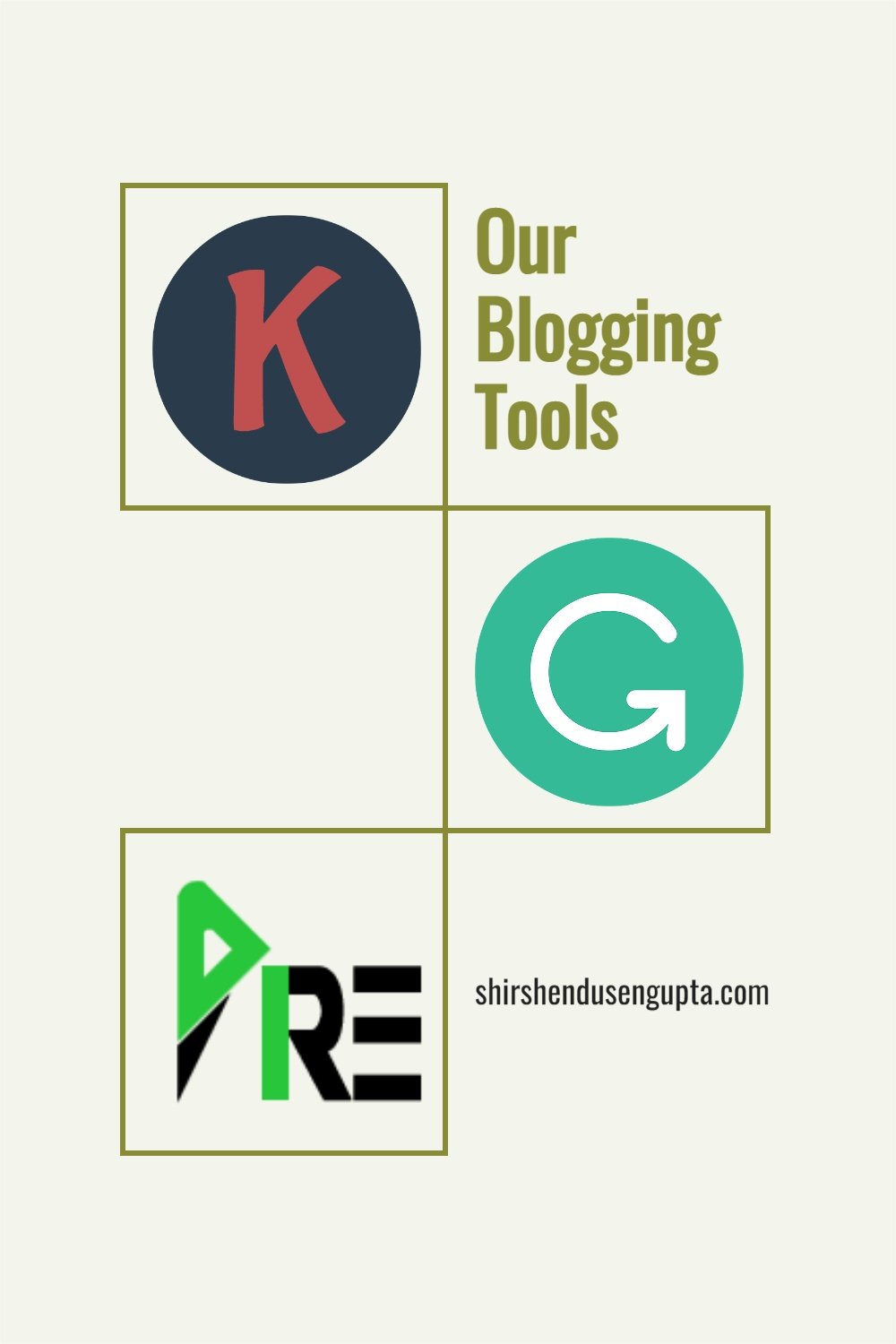Our Cameras
“The best camera in the world is the one that you have!”
I've always been a big proponent of the age-old adage, "The best camera in the world is the one that you have; you just need to know how to use it!" As in Kung-Fu Panda, Po finally realized, "There's no 'Dragon Scroll'; it's just you," I genuinely believe it's not about the gear. If you possess good composition skills, have a fair understanding of optics and know the settings of your camera and use it well, you will be surprised to see the kind of miracles you can do with your existing gear. However, it's also true that every gear has a technical limitation and it's never too bad to keep upgrading. So, based on your requests, today I'm going to share my perspective on the camera models we've been using over the past years and which one to choose in what scenario. I hope it helps you in making your choice!
But before we start, if you are unclear of the differences between the DSLR and Mirrorless cameras and are struggling to decide which one to buy, please read our article DSLR vs. Mirrorless Cameras | What are the Key Differences and How to Choose Which is Best for You?
This page may contain affiliate links. If you make a purchase through one of them, we may earn a small commission at no additional cost to you. Your support helps us bring you genuine experience-based recommendations on photography, travel, and blogging.
Sony Alpha 7 Mark V
Best Intermediate Hybrid Full-Frame Sensor Mirrorless Camera
Sony continues to dominate the mirrorless camera market, and the Alpha 7 Mark V pushes that lead further with a host of advanced features. Its 33-megapixel partially stacked Exmor RS™ sensor speeds up readout, reduces rolling shutter, and enables 30 fps blackout-free shooting. Paired with the BIONZ XR2 processor and AI-powered subject tracking, it delivers outstanding autofocus for humans, animals, and birds. Video features include 4K/60p full-frame, 4K/120p crop, 10-bit capture, S-Log3, and HLG. With 7.5-stop in-body stabilization, a 4-axis touchscreen, pre-capture mode, and dual card slots, the Alpha 7 V is a versatile, hybrid powerhouse for photography and video!
Nikon D750
Best Beginner to Intermediate Full-Frame Sensor DSLR Camera
Before switching over to the mirrorless ecosystem, I used D750 for a long time. I must say D750 is a great value for money full-frame sensor DSLR camera. Carefully poised between the less expensive D610 and the pro-grade, high-resolution D810, the D750's build, features, ergonomics, handling, and image quality lean more towards the more expensive D810 than D610. If you plan to move to an excellent full-frame sensor camera that is affordable yet gives you premium image quality, you should go for this model.
Nikon D7500 (7000 series)
Best Intermediate to Advanced Half-Frame Sensor DSLR Camera
If you are looking for a camera that offers great dynamic range, low light sensitivity, and top-notch image quality but you can’t afford the higher-end full-frame sensor cameras, then I would suggest going for this one rather than buying an entry-level full-frame sensor model, since the image quality of D7500 is very much comparable if not better than the low-end full-frame sensor camera. D7000 series is the best half-frame sensor camera series ever made by Nikon or probably any of the major players, period. I have used D7200 for around 3 years and I can bet you cannot make out, which of the images in my gallery are shot by this camera.
Nikon D3500 (3000 series)
Best Beginner Half-Frame Sensor DSLR Camera
For beginners with a tight budget, the D3500 with great build, good image quality, simple menus, and superb battery life is the epitome of 'value for money.'' Having used D3300 for around 3.5 years, which was my first DSLR, I was surprised by its ability to capture great dynamic range if you under-expose your shots a little and to produce beautiful images at par with the D5000 series. It is this camera with which I learnt photography. So for starters, on a budget, it is a perfect choice. The basic kit comes with an 18-55 kit lens, which makes it ready to go!
Canon PowerShot SX540 HS
Best Compact/Point-and-Shoot Camera
If you are looking for a compact camera that is simple to use yet powerful enough to capture stunning images, you should opt for the Canon PowerShot SX540 HS. We always have this point-and-shoot camera as a backup to our Mirrorless or DSLR cameras, and trust me, it takes no less amazing pictures than those cameras. It has a 20.3 Megapixel CMOS sensor, a 24 - 1200 mm lens (35 mm equivalent) with 50x optical zoom and image stabilization, 1080p Full HD video capability at 6 fps, built-in Canon High Power Flash HF-DC2, Wi-Fi, NFC, and handling easy enough for becoming my son’s hobby camera since he was eight years old. So go for it!
Apple iPhone 16 Pro Max 512 GB
Best Mobile for Photography/Videography in RAW Format
Built out of a super strong and lightweight Titanium frame, running on iOS 18, powered by A18 Pro chip, and equipped with Apple AI capabilities, the iPhone 16 Pro Max features a 6.9-inch Super Retina XDR display, a Ceramic Shield glass twice as strong as any smartphone glass, and amazing battery life (33 hours of video playback). With a capability to shoot 48 MP ultra-wide-angle to 10x telephoto optical zoom stills, macro, and long-exposures in ProRAW (Apple’s RAW image format), 4K 120 FPS Dolby Vision videos in ProRes (Apple’s high quality, lossless video compression format) backed by an advanced OIS (Optical Image Stabilization), 4 studio-quality microphones to capture crystal-clear footage, and a brand new dedicated camera control button with zoom, aperture control functions, etc., it is no less than a professional studio in your pocket. So if you want to reduce your blogging/vlogging equipment (especially on business trips), and save that time to create more memorable images/videos, you must get this!
Epilogue
So that was the list of all the camera models that we are currently using or have previously used that we recommend to you based on our personal experience. Additionally, I would also advise you to read our article DSLR vs. Mirrorless Cameras | What are the Key Differences and How to Choose Which is Best for You? to understand the differences between the DSLR and Mirrorless cameras and know which one to choose in what scenario. Hopefully, then you will be in a better position to make an informed decision.
Please let us know in the comments below if our articles have helped you in making your decision. Until then, merry traveling and happy shooting!
Pin the article
Bookmark the article for reading later!
Want us to write an article for you?
Articles for magazines, newspapers, and websites!
Watch our Videos
Check out our videos on our Youtube Channel!
Join the Newsletter
Get updates on our latest articles!
We respect your privacy. Read our policy here.

